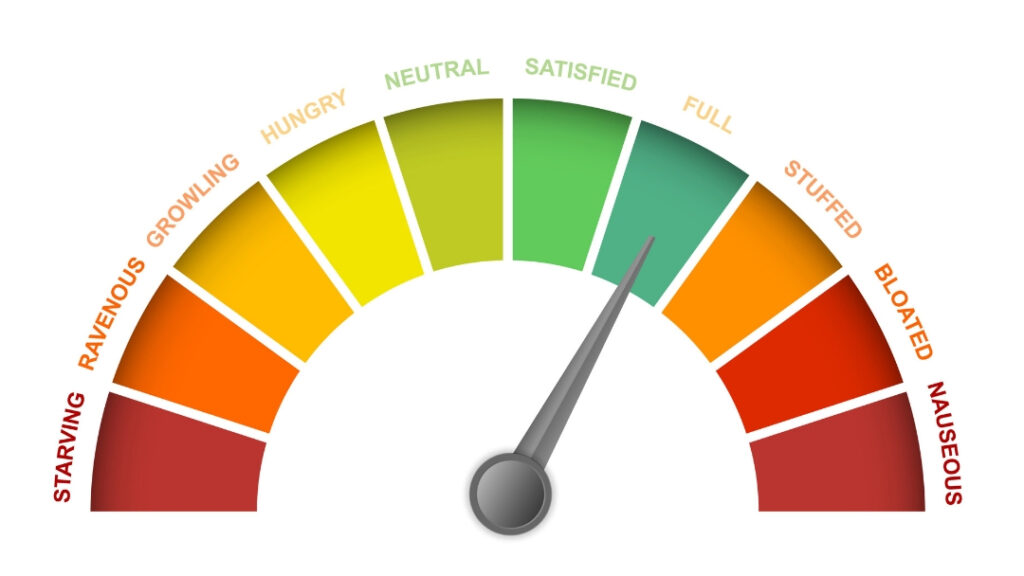Honoring your hunger without guilt is a key principle of intuitive eating. Many people have been taught to ignore hunger signals or feel bad for eating, but intuitive eating encourages listening to your body. Books like Intuitive Eating for Everyday by Evenlyn Tribole explain how to develop a healthy, guilt-free relationship with food. Here are some insights from the book.
- Understand Your Hunger
The first step is understanding your hunger. One tool to help with this is the hunger scale or hunger fullness scale. This scale ranges from 1 to 10, where 1 means you’re extremely hungry, and 10 means you’re overly full. By using the hunger scale 1-10, you can check in with your body throughout the day. Aim to eat when your hunger level is between 3 and 4—this is when you feel hungry but not starving. When you understand the levels of hunger, it becomes easier to honor your body’s needs without guilt.

- Ditch the Diet Mentality
Diet culture often teaches people that hunger is something to fight against. But intuitive eating takes a different approach. It encourages you to embrace hunger as a natural part of life. Instead of seeing hunger as a weakness, you can view it as your body’s way of telling you it needs fuel. An intuitive eating coach or intuitive eating nutritionist can help you work through these mental barriers. The best books on intuitive eating emphasize that food should not be a source of guilt but a way to nourish your body.
- Pay Attention to Your Body
Intuitive eating is about learning to trust your body again. As Intuitive Eating for Everyday explains, your body knows when it needs food, and it’s okay to eat when you’re hungry. Using the hunger satiety scale can help you become more aware of when you’re hungry and when you’re full. Over time, paying attention to these signals helps with body maintenance and reaching your natural final shape maintenance, all without the stress of dieting.
- Focus on Satisfaction, Not Restriction
Instead of restricting certain foods, focus on how food makes you feel. What foods satisfy you and give you energy? This approach is a key difference in the intuitive eating vs mindful eating debate. While mindful eating is about being present during meals, intuitive eating takes it further by encouraging you to choose foods that satisfy both hunger and enjoyment. Letting go of guilt means eating what feels good for your body without worrying about diet rules.

- Recognize Emotional Hunger
Sometimes, you might eat because of emotions, not hunger. This is normal, but it’s important to understand the difference between emotional hunger and physical hunger. By recognizing emotional eating, you can find other ways to manage feelings without turning to food. Talking to an intuitive eating nutritionist or using resources like Intuitive Eating for Everyday can help you identify emotional eating patterns and build healthier habits.
- Trust the Process
Honoring your hunger takes time. You might not always get it right, and that’s okay. The goal is to build trust with your body over time. Although some people wonder how to lose weight with intuitive eating, the focus should be on creating a healthy relationship with food rather than weight loss. By trusting your body and letting go of guilt, you will naturally find balance.
Conclusion
Honoring your hunger without guilt is essential for developing a healthy relationship with food. Using tools like the hunger scale and focusing on satisfaction instead of restriction can help you listen to your body’s needs. With the help of Intuitive Eating for Everyday and guidance from an intuitive eating coach, you can learn to honor your hunger and build lasting habits for body maintenance.




